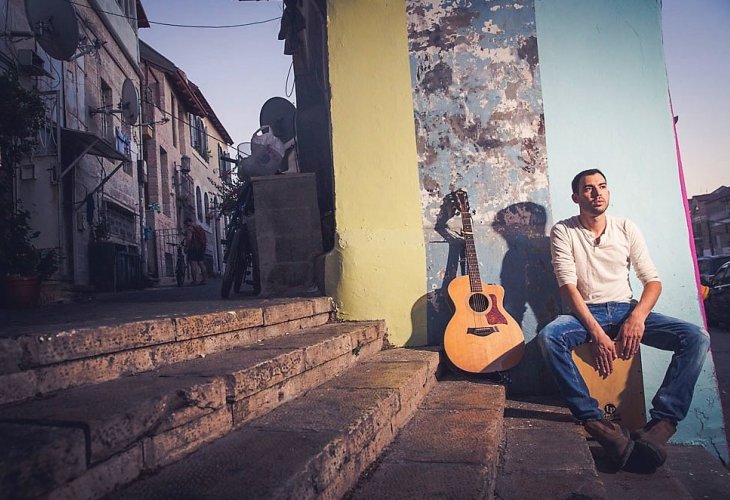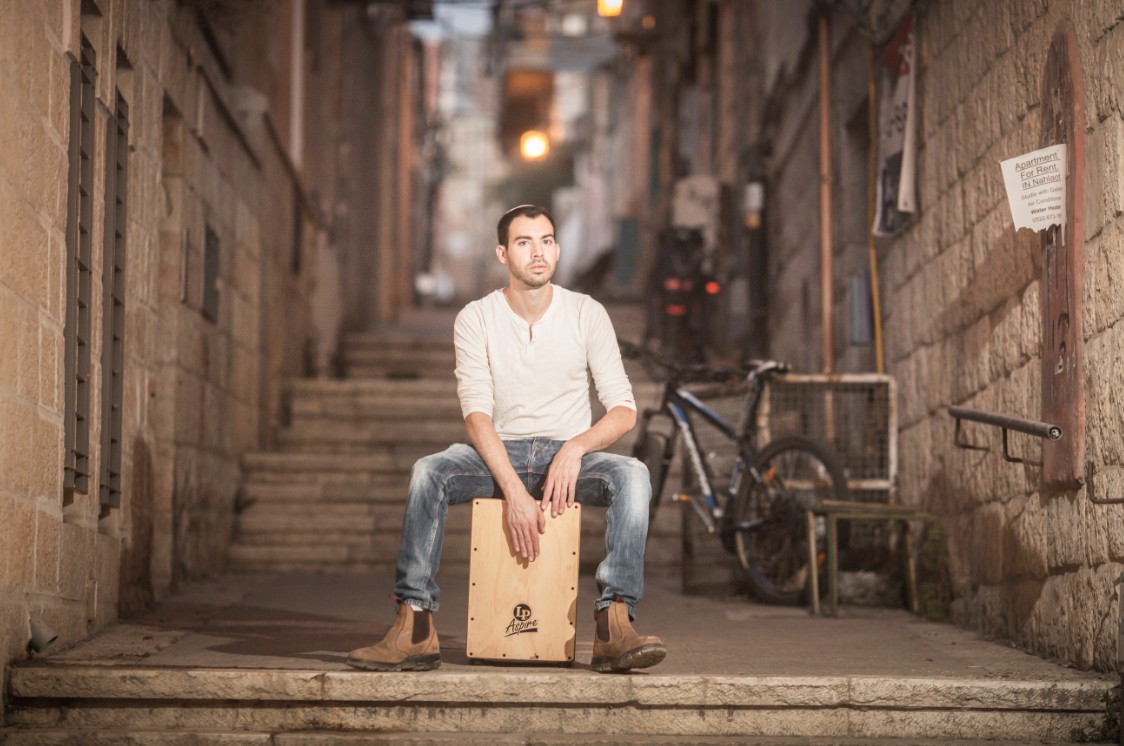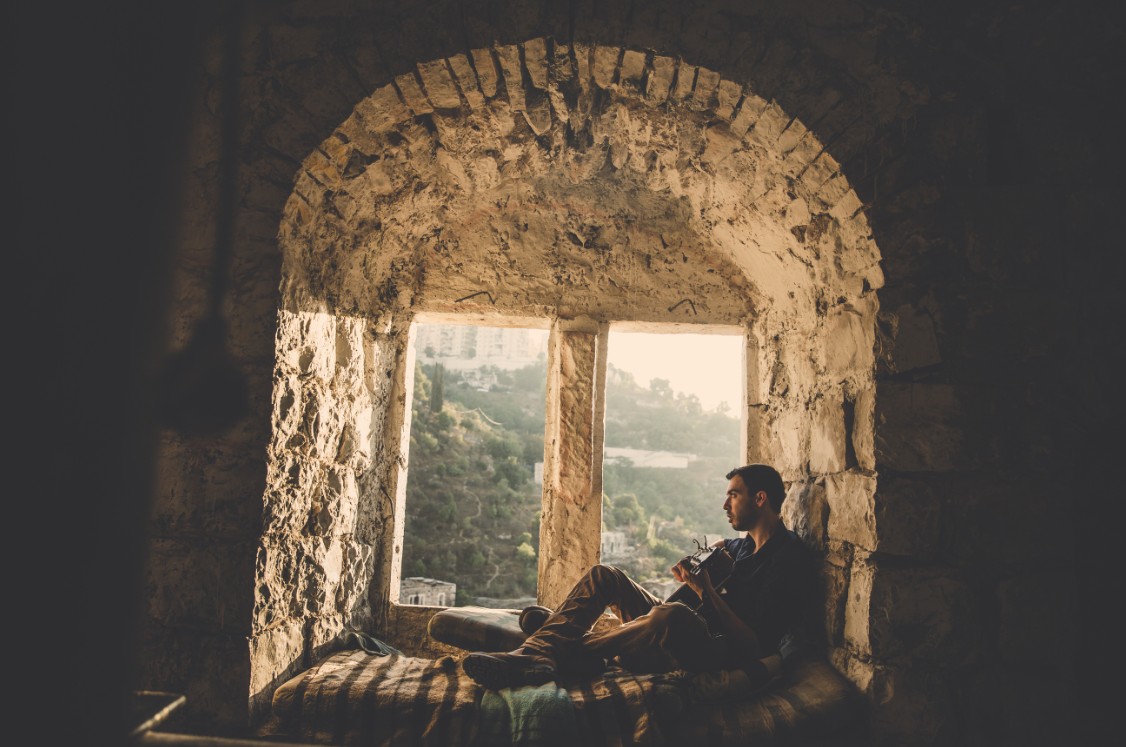Ido Portal: "The Selichot of Sephardi Traditions Combined with Ashkenazi Melodies Create the Perfect Harmony"
For four years, singer Ido Portal has immersed himself in the Selichot melodies, accompanying Selichot journeys around the country. He is now releasing a unique album entirely dedicated to Selichot songs. Listen and be moved.

The month of Elul is here, and the Selichot melodies have become part of our daily prayer. However, for some, Selichot accompany them throughout the year. Such is the case for Ido Portal, a talented singer who has been working on a new and unique album dedicated entirely to Selichot songs for the past four years.
"The idea actually began with my personal experience," he shares. "I grew up as a child in Kibbutz Merav in the Gilboa - an authentic Ashkenazi kibbutz. Even though my family is half Moroccan and half Persian, I only knew Ashkenazi prayers during my childhood; even the Sephardic style was unfamiliar to me. It wasn't until high school, when I began studying at a religious high school in Beit She'an, that I first encountered Sephardi selichot. This connection profoundly linked me to my family tradition. A few years ago, when my grandfather passed away, it prompted us all to connect even more to our family's roots, including the unique tunes that define our traditions."
For Ido, it was surprising and exciting. "Suddenly a new world opened up to me," he recounts. "I would listen to the melodies and immediately think about how to perform and adapt them. It opened a window to an amazing world I had never known."
Did you connect more to these tunes than the Ashkenazi ones?
"It's hard to answer because it's not possible to say if one is better than the other. However, from a professional standpoint, I can say that the tunes of both traditions are completely different, and they have different musical perceptions. In general, the entire approach to prayer is distinct — the Ashkenazi tunes of the High Holy Days are filled with awe and trembling, while the Sephardi ones are more flowing and natural. Personally, I love both styles and have gained tremendously from knowing them both closely."
Would you recommend cantors integrate the two styles?
"No, because it doesn't work well. In my opinion, there's no way to combine tunes from various types in one prayer. But knowing the different traditions is very important, and I'm sure anyone who tries to listen to the album and gets to know both versions will benefit greatly."

A Musical Journey
The project for the Selichot album began with the first song Ido adapted — 'Im Epet Rovea Hakena'. "It is a very moving piece from the prayer that, for some reason, no one thought to turn into a song until now," he asserts. "The arrangement I chose resonated in my mind for several years, and eventually, it found its way into the studio."
The progression then led to additional arrangements and a tour that Ido and Roy conducted together with a line-up of musicians. They traveled between synagogues in Nachlaot, mainly settling at the Beit Knesset HaBanim (Lovers of Zion). There they would play the Selichot tunes, where, naturally, musical connections emerged between Western and Eastern instruments. "We took this show through countless Selichot tours," Ido shares.
He also points out something else: "When we came to add tunes from the Ashkenazi side, like for example 'Hinneni Anni MiMa'as', which is stunningly beautiful cantorial, we were a bit hesitant. So after the recording, I sent the arrangement to a cantor from Kibbutz Merav and asked him to decide — should we include the song in the album?"
Why not, actually?
"Because we took the Ashkenazi prayers to a different, more stirring place. We added tunes with an oud, darbuka, and even an Arabic flute. These are elements that do not naturally fit into Ashkenazi prayers, but I think that's exactly why they contribute and complete them so much."
For two weeks, Ido says, the cantor from Merav did not respond. "Truthfully, I was a bit anxious. But eventually, he got back to us and said he really enjoyed the arrangement. While it's different and unique, he fully supports it."

A Month of Singing
Now, after countless performances and immense effort, the album is finally being released. "For me, it feels like I'm closing a circle," Ido notes. "This is a summary of the period I've been through — from growing up in the kibbutz, through discovering my roots, to the special prayers in Nachlaot. The album essentially represents a combination of everything."
And who is it intended for?
"Our main aim is to make these tunes accessible to people who are less connected to them and less familiar with the words of the prayer, whether it is because they pray in a different style or for any other reason. I believe the more you hear these songs, the more you connect to the words when you are in the synagogue."
According to him, it is no coincidence that his album is being released specifically in the month of Elul. "My creative source has always been Elul. Even in my previous albums, all creative materials revolved around Elul, and the songs always dealt with repentance and awakening. Maybe it's also because I was born in this month. I feel that throughout the year, I'm in a period of Selichot and awakening. "And I think," he concludes, "that's my primary gain."

